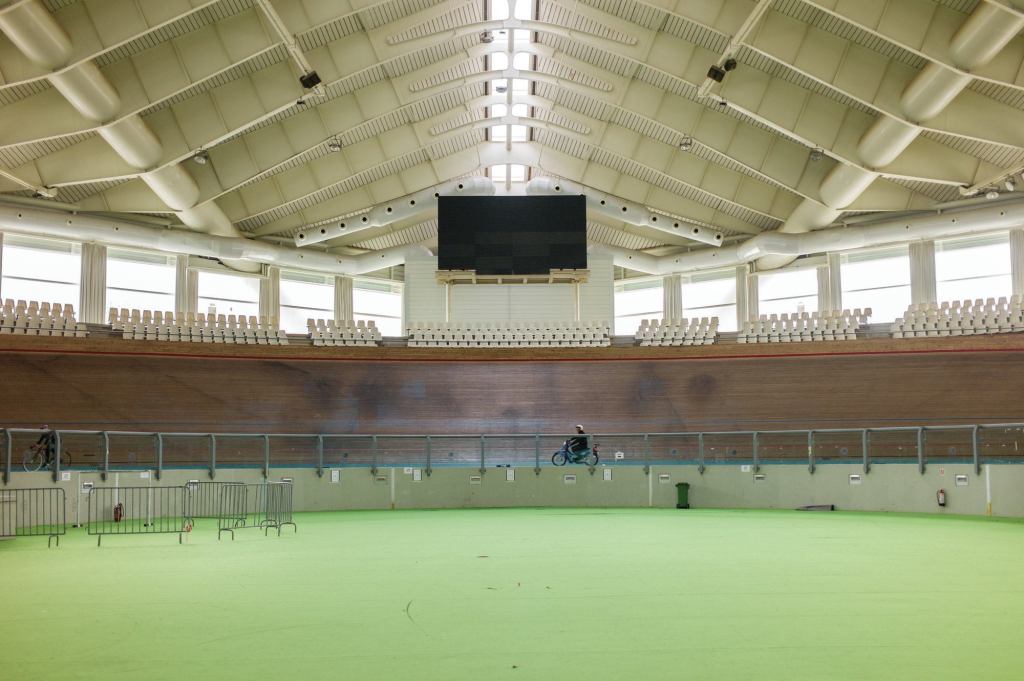When Brooklyn-based photographer Jon Pack heard that Beijing had spent $42 billion on infrastructure to host the 2008 Summer Olympics, he had one question: What happens to those buildings, and to the city, after the Games? To find out, he set off to photograph the structures left behind in the former Olympic host cities closest to him, Montreal, Quebec, and Lake Placid, N.Y.
Soon, his friend Gary Hustwit, the documentary filmmaker behind Helvetica and Urbanized, became interested, and the two raised $66,000 on Kickstarter to document the afterlives of 14 host cities. Their photographs from those excursions are now collected in The Olympic City, a 200-page coffee-table book designed by Paul Sahre, with an introduction by The New York Times architecture critic Michael Kimmelman. Among the pictures are an Olympic Village that became a prison (1980 Lake Placid Games), ski jumps that became the backdrop for executions (1984 Sarajevo Games), and a blighted waterfront that became a bustling marina (1992 Barcelona Games). On display throughout are the effects of war, weather, decay, regime change, neglect, and urban renewal.
Here we present a selection of photographs from The Olympic City—an ongoing project that will continue, we hope, with a look at Rio after 2016.
